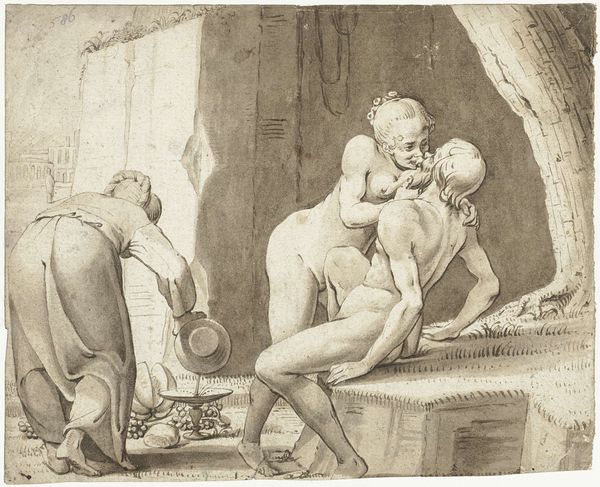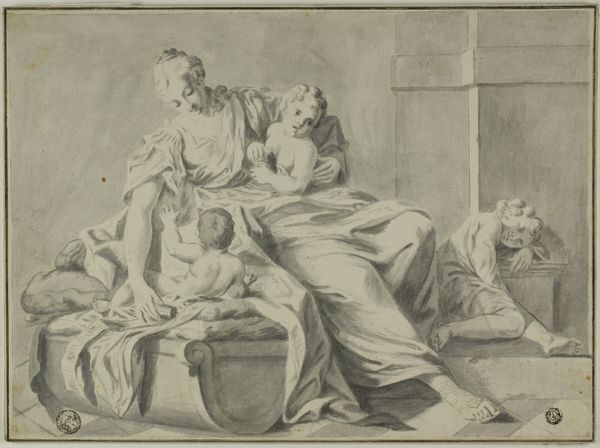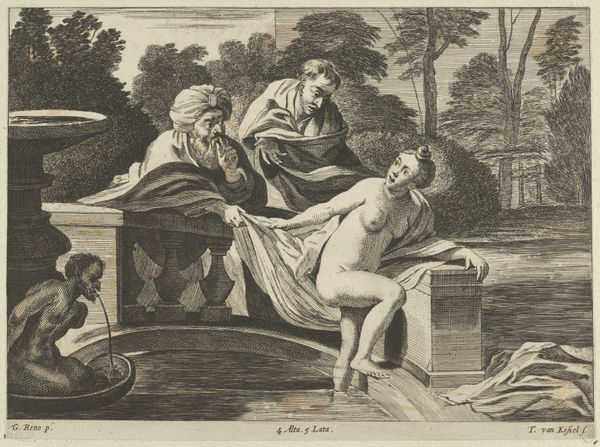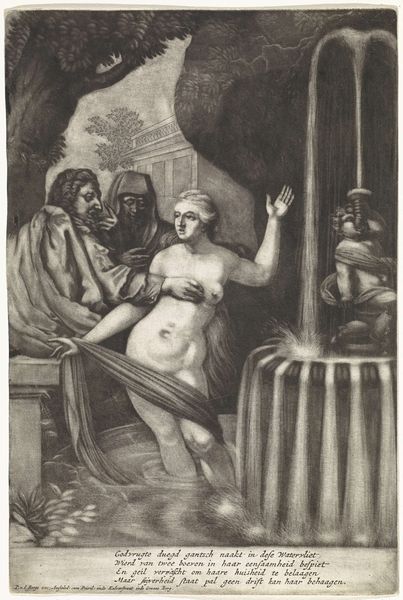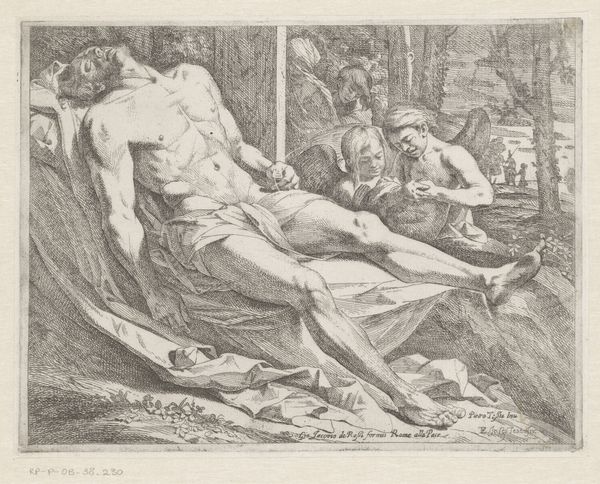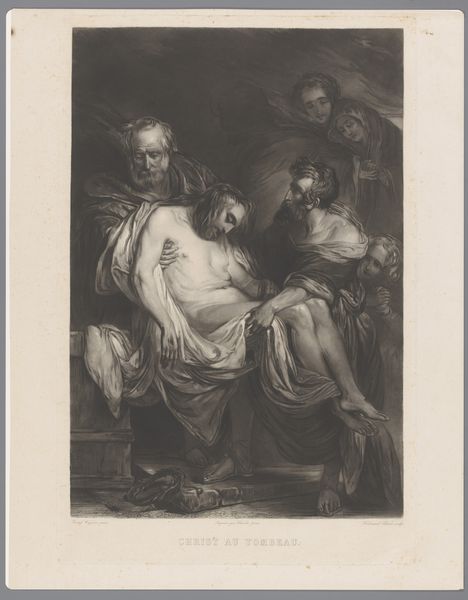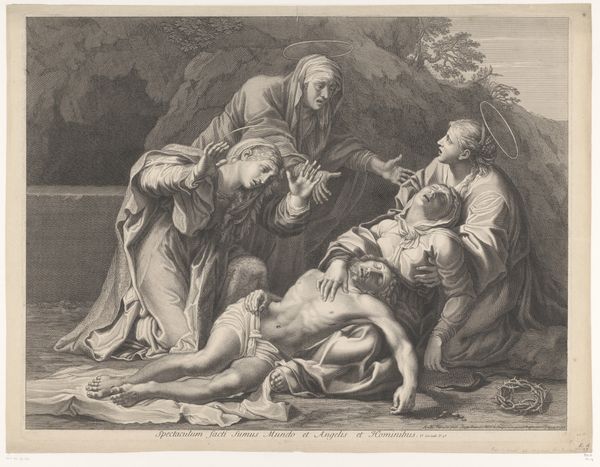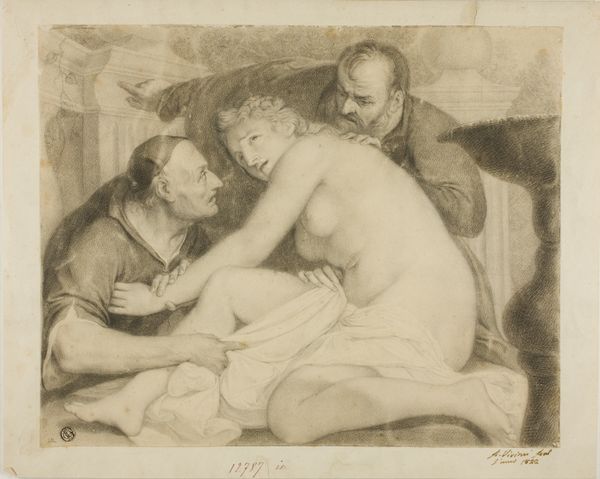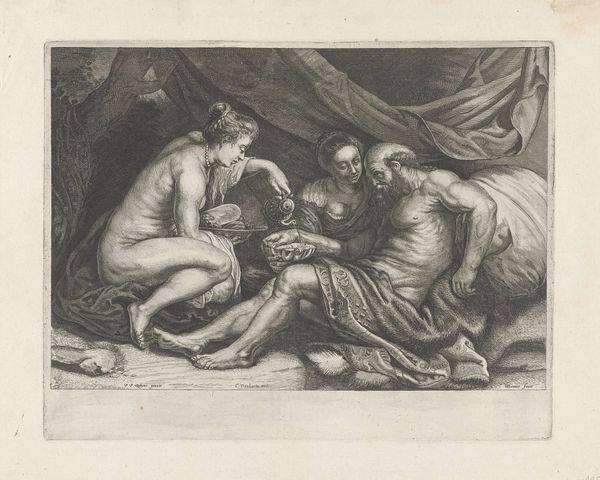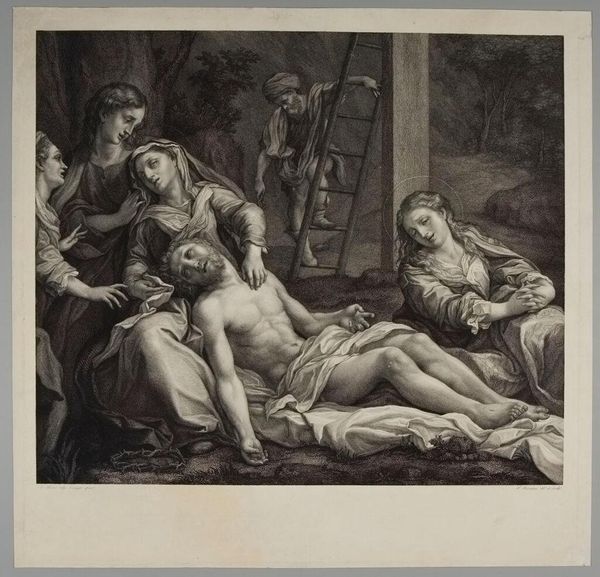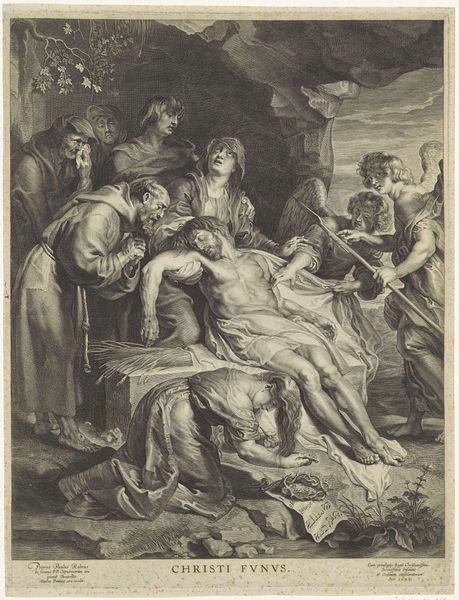
drawing, charcoal
#
drawing
#
baroque
#
charcoal drawing
#
charcoal art
#
pencil drawing
#
genre-painting
#
charcoal
#
history-painting
#
charcoal
#
nude
Dimensions: height 317 mm, width 381 mm
Copyright: Rijks Museum: Open Domain
Editor: This is Cornelis Visscher’s charcoal drawing, "Susanna and the Elders," made sometime between 1654 and 1658. It has an almost unsettling intimacy to it, heightened by the stark contrast between light and shadow. The story being told makes my skin crawl! What do you see in it? Curator: Oh, that crawl is precisely where the power lies, isn't it? Visscher captures that tense, charged moment with a haunting immediacy. Beyond the drama, though, I see Visscher flexing his technical muscle, right? Notice how he uses charcoal not just to depict, but to evoke a whole atmosphere? And those luminous passages of Susanna's skin… almost as if he's using the light itself to protest the violation. It’s baroque, alright—but baroque with a conscience, maybe? What do you think? Editor: A conscience… That’s a really interesting point! I hadn’t considered that the lighting itself could be a commentary. So, beyond the clear technical skill and the drama of the narrative, you're suggesting Visscher might be subtly taking a stand against the actions depicted? Curator: Subtlety within the spectacle, that's the trick. I wouldn't go so far as to say he's 'taking a stand', as such. Artists of that era didn’t quite broadcast social commentary that way. But it’s not just a pretty picture, either. It’s complex! It’s playing with light and shadow both literally and morally, wouldn’t you say? I mean, art history's always been a funhouse mirror to society's anxieties, right? Editor: Definitely. Thanks, I'll never look at charcoal drawings the same way! Curator: Good. May your looking be forever gloriously altered.
Comments
No comments
Be the first to comment and join the conversation on the ultimate creative platform.

